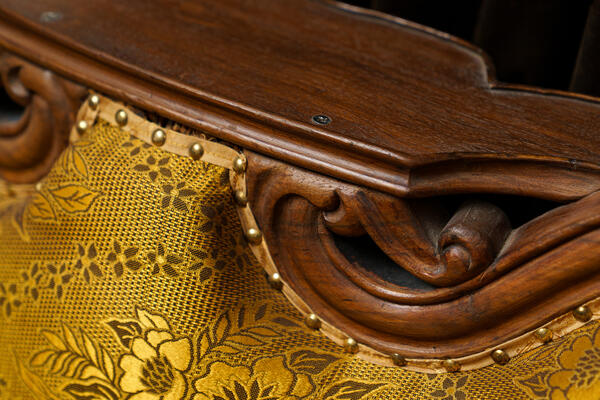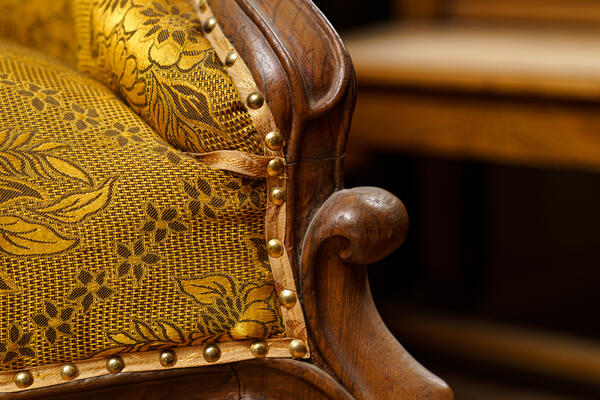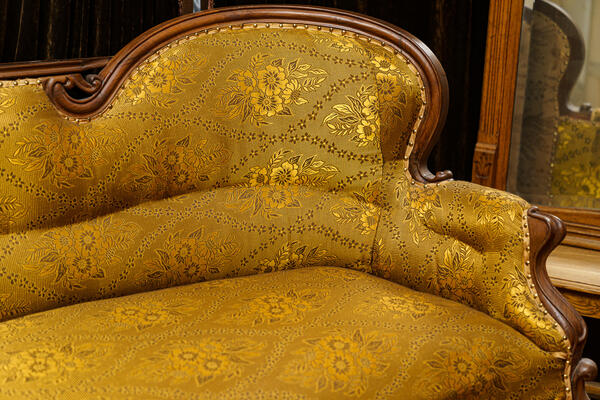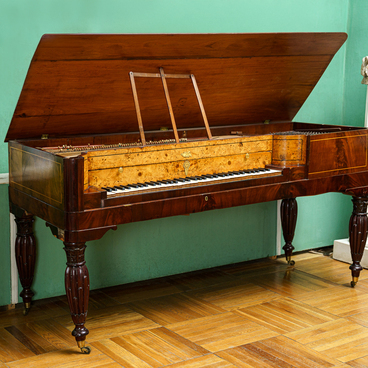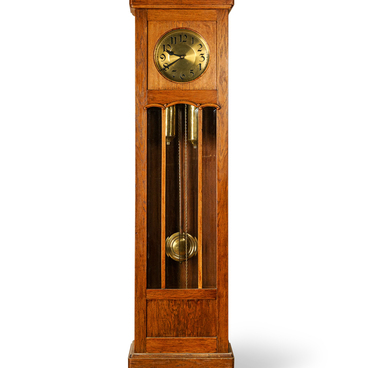The museum’s exhibition presents a Baroque soft sofa decorated with exquisite carvings. The sofa has a shaped backrest with a small horizontal shelf, a soft spring seat, and four legs on wheels. Wheels were necessary for faster and more convenient movement of furniture when cleaning the room or in case of rearrangement. The base is made of light-colored wood covered with veneer and lacquer. The upholstery fabric is golden brown in color, decorated with a woven pattern. The front side has a pattern in the form of a diamond-shaped large grid formed by chains of numerous brown florets: the grid cells contain floral compositions. The back side is decorated with a large floral design.
The backrest has a wooden frame made in the form of two interlocking arcs with scrolls at the ends. A narrow shelf with shaped edges is fixed at the junction of the arcs at the back. On the sides the arcs smoothly pass into narrow curved armrests upholstered in fabric and decorated in front with wooden carved details, which pass into the front legs made in the form of stylized lion’s paws. The back legs are curved. The front seat is rounded and convex.
The sofa on display was part of a smart furniture set including armchairs in the same style. The exhibit dates back to the era of mass production of sofas, when, thanks to the emergence of specialized enterprises, technologies were simplified and more affordable materials were used.
In the late 19th and early 20th centuries, the sofa ceased to be a luxury item and became an affordable piece of furniture. Sofas could be found in the homes of merchants and even wealthy peasants. In public buildings and offices, there were sofas, for example, for those waiting for appointments.
The sofa became part of the museum’s collection in
1999. The name of this piece of furniture in Russian is a borrowing from the
French language, where it came from Persian. A “sofa” means “an elevated floor
covered with a carpet”.

